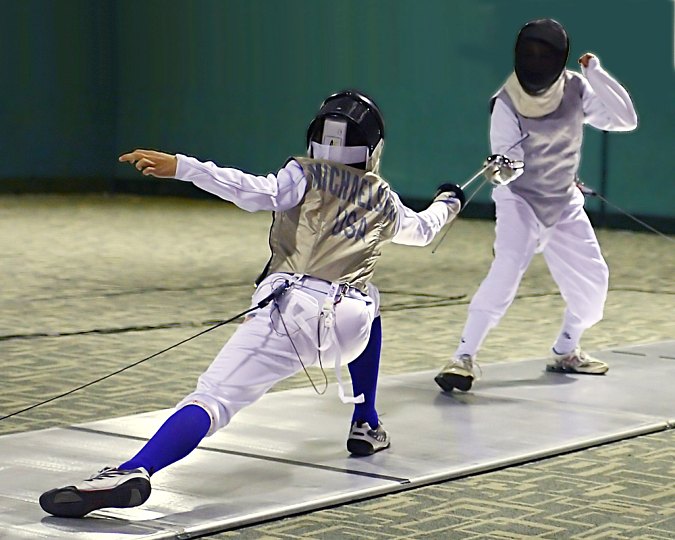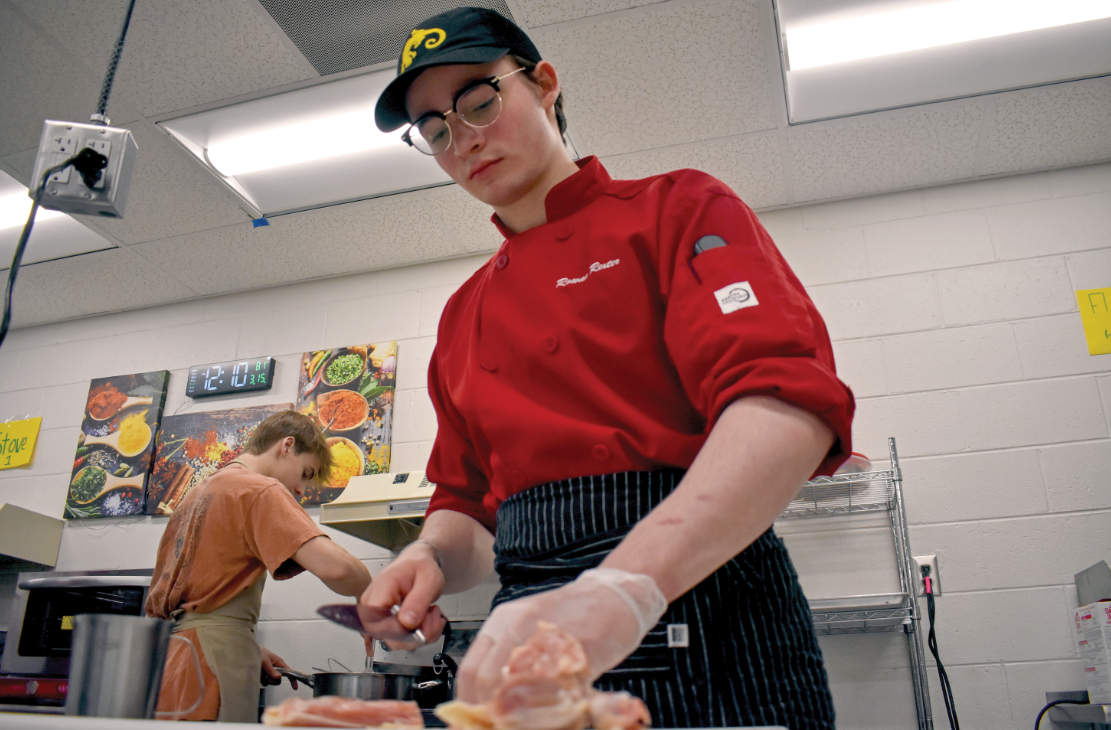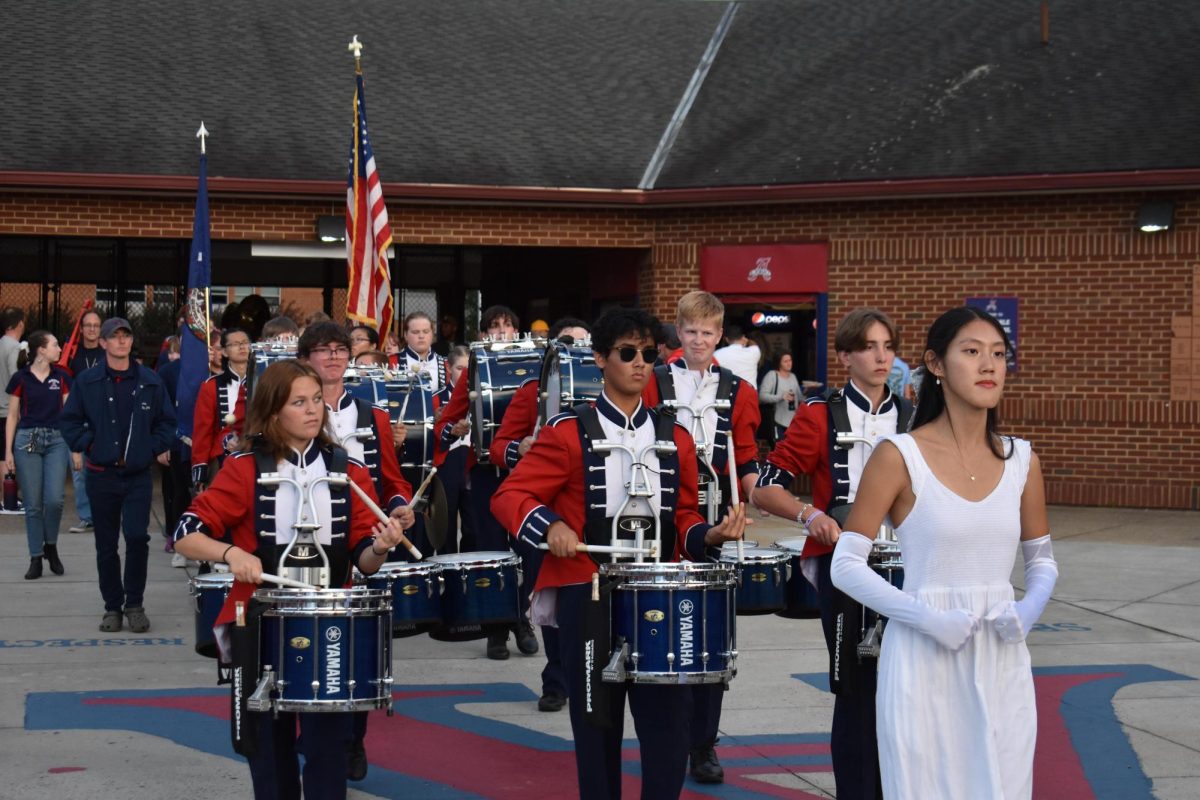While some fencers and coaches refer to it as “physical chess,” fencing is a lightning-fast sport that requires intense physical and mental training. Despite the sport’s complexity, several AHS students have taken on the challenge of learning and mastering the art of fencing.
Junior Matthew Olowin fences at the Charlottesville Fencing Alliance (CFA). “I started fencing in the middle of seventh grade…I decided to start fencing when one of my classmates decided to start and I joined on,” Olowin said.
Sophomore Jacob Beiter used to fence at CFA. He was introduced to the sport when “my math teacher in middle school at Peabody had fenced and thought it would be cool to make a school team.”
Fencing began in the late Renaissance era with duels and schools teaching how to duel, according to Olowin.
“[Fencing] is a sport requiring both mental and physical control,” he said. “Fencing is done in bouts. Each bout is fenced to three periods of three minutes, or 15 touches. A touch is when one person scores a point on the other.”
The sport has three different weapons: foil, sabre, and epee. “Foil and sabre have a complicated system of right of way to decide who gets the points if both people hit each other,” Beiter said. “Foil target area is the torso and you hit with the point, while in sabre you can hit with the edges of the blade and you target the waist up ([it] comes from people fighting on horseback).”
Freshman Ayushi Singh, who fences in Richmond, started fencing when she was eight. “I saw my cousin fence so I started fencing [because] I thought it was interesting,” she said.
Her family has fenced for multiple generations. “My cousin is in [the] USA national fencing team…another way I learned about this sport is from my grandfather,” Singh said.
Both Beiter and Olowin said that tournaments are the most enjoyable part of fencing, and Singh said that competing is the most fun.
“Several clubs in Virginia often host tournaments that involve a pool where you fence everyone else in a group of about six, which seeds you for the DE’s (or direct elimination) where it’s just a tournament style bracket,” Beiter said.
Tournaments “are great times to fence people outside of the club, and learn new things from people,” Olowin said. “They are also good times to watch other people and practice evaluating other fencers for their strengths and weaknesses and develop strategies to use against them.”
What kept Beiter interested in fencing is the fact that, “it’s just so fun…You have to be smart, strong, and quick to win.”
Something else that he loves about fencing is the community. “There are so many cool and great people fencing that you see around the club at tournaments,” he said.
Fencing is a commitment; not only do CFA fencers have to commute to the facility to practice, but it can also be expensive. “Membership to the club costs a good bit, as well as your own gear (which I had),” Beiter said. “Also, tournaments are at least $20 a pop.”
The sport also requires a lot of preparation. “You have to practice a lot and [at the] same time you have to manage school work,” Singh said.
An important element of fencing is mastering the art of having quick reactions to your opponent’s movements. A challenging aspect of the sport is “training yourself until the appropriate and successful reactions become automatic,” Beiter said.
Applying your skills during bouts is another challenging aspect of the sport. “…Knowing when to use what you’ve learned in a given situation is hardest,” Olowin said. “Since both people are trying to score touches, you have to react and anticipate what the other person is going to do and figure out how to counter them. To really be successful at fencing you need to be able to stay one step ahead of your opponent and trick them into making a mistake.”
Fencing does not always have a competitive edge, however. This sport can be one that’s just “done for fun” as well, according to Olowin. Anyone interested in beginning to fence can.








